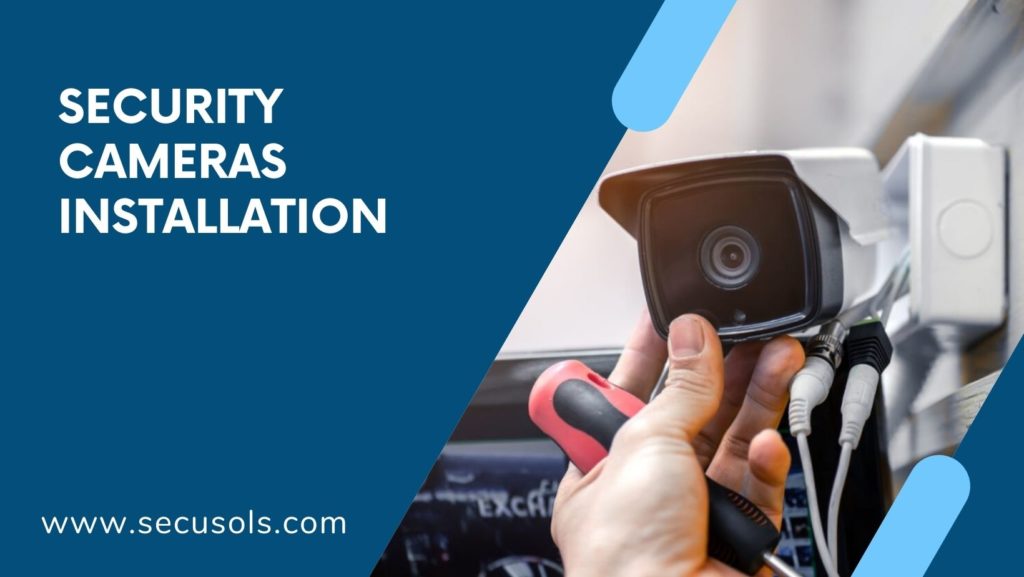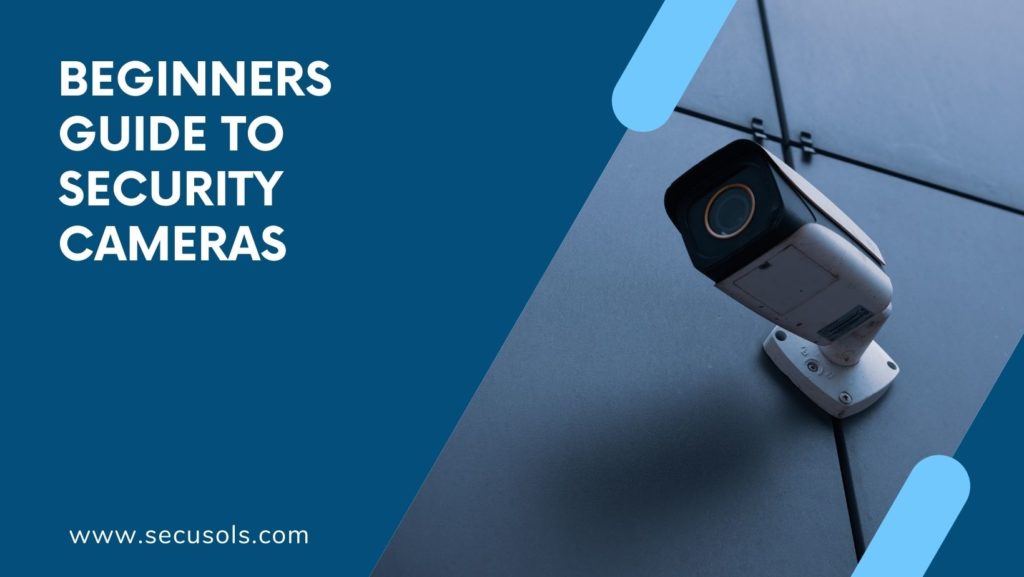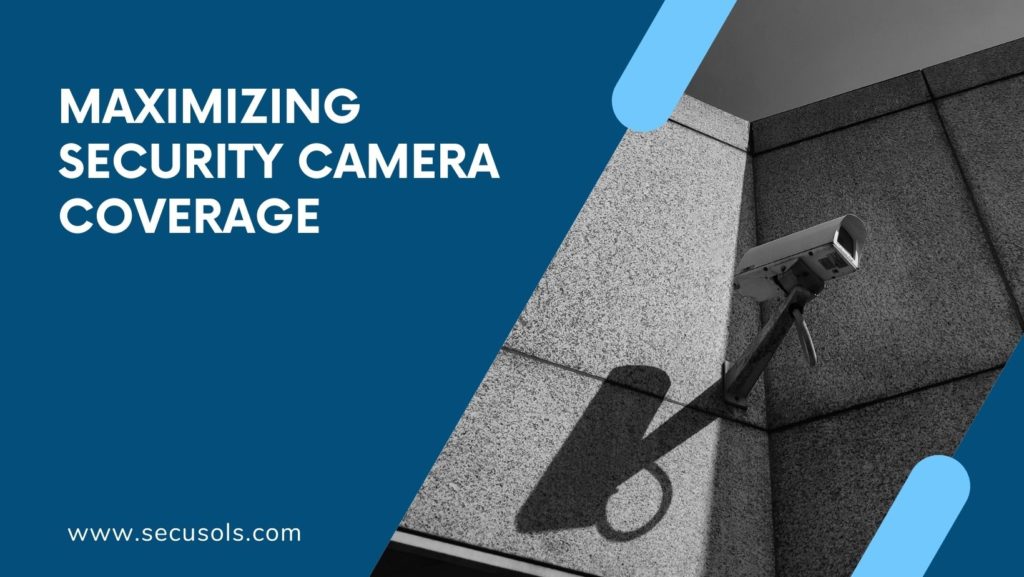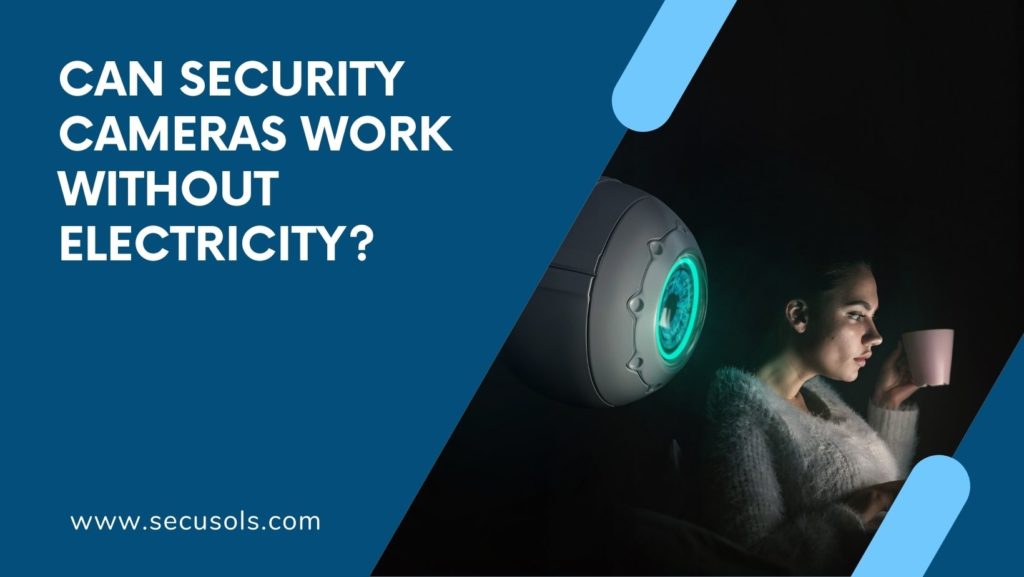Table of Contents
ToggleHey there, security-conscious readers! Today, we’re diving into the age-old debate: DIY installation versus professional installation for security cameras. As a security camera expert, I’ve seen firsthand how these cameras play a crucial role in safeguarding our homes and businesses. They provide us with a sense of peace and a watchful eye when we can’t be present physically.
When it comes to security cameras, one of the first decisions you’ll face is whether to tackle the installation yourself or hire professionals to do the job. DIY installation refers to setting up the cameras on your own, while professional installation involves bringing in experts who specialize in camera installation.
Now, let’s take a moment to understand why security cameras are so important in the first place. Whether you’re protecting your home or business, security cameras serve as a deterrent against potential intruders. They capture crucial evidence in case of any unfortunate incidents, help monitor activity in and around your property, and provide valuable insights for improving safety measures.
So, with the significance of security cameras established, let’s explore the two installation options and weigh their pros and cons.
Understanding Security Cameras:
A. Different types of security cameras available in the market:
When it comes to security cameras, the market offers a wide range of options to suit various needs and preferences. Let’s explore some popular types:
Dome Cameras:
These cameras are characterized by their dome-shaped design, making it difficult for potential intruders to determine the direction the camera is pointing. They are commonly used in indoor settings and offer a sleek and discreet appearance.
Bullet Cameras:
Known for their cylindrical shape, bullet cameras are often used for outdoor surveillance. They are weatherproof and provide a visible deterrent with their prominent presence. Bullet cameras are great for covering specific areas, such as entrances or driveways.
PTZ Cameras:
PTZ stands for Pan-Tilt-Zoom, and these cameras offer the ability to pan horizontally, tilt vertically, and zoom in for a closer view. They are ideal for large areas where you want to monitor different angles and zoom in on specific details.
Wireless Cameras:
As the name suggests, wireless cameras operate without the need for physical cables. They offer flexibility in terms of placement and can be easily installed in areas where running wires is challenging.
B. Key features to consider when selecting security cameras:
When choosing security cameras, it’s essential to consider specific features that align with your requirements. Here are some key features to keep in mind:
Resolution:
Look for cameras with high-resolution capabilities, such as 1080p or even 4K. Higher resolution ensures clearer and more detailed footage.
Night Vision:
Opt. for cameras equipped with infrared (IR) LEDs or low-light sensors for reliable night vision capabilities. This feature allows the camera to capture clear footage even in low-light conditions.
Motion Detection:
Cameras with motion detection capabilities can send alerts or trigger recording when motion is detected in the camera’s field of view. This feature helps reduce storage space and provides alerts for potential intrusions.
Two-Way Audio:
Some cameras offer built-in speakers and microphones, enabling two-way communication. This feature allows you to interact with visitors or deter intruders remotely.
C. Factors to evaluate for optimal camera placement:
To maximize the effectiveness of your security cameras, proper placement is key. Here are a few factors to consider:
Coverage Area:
Identify the areas you want to monitor and ensure that your cameras have an adequate field of view to cover those areas effectively.
Height and Angle:
Mount the cameras at an appropriate height and angle to capture clear footage. Aim to have a view that covers entry points, high-traffic areas, and vulnerable spots.
Lighting Conditions:
Take into account the lighting conditions in the areas you plan to monitor. Adjust camera settings or consider cameras with adjustable settings to accommodate varying lighting conditions.
Weather Resistance:
For outdoor cameras, make sure they are weatherproof and can withstand the elements. This ensures their longevity and reliability even during harsh weather conditions.
By understanding the different types of security cameras available, considering key features, and evaluating optimal camera placement, you’ll be well-equipped to make informed decisions when it comes to your security camera setup. Stay tuned as we explore the pros and cons of DIY and professional installation methods in the next section!
DIY Installation: Pros and Cons
A. Advantages of DIY Installation:
Cost savings and affordability:
One of the most appealing aspects of DIY installation is the potential for cost savings. By eliminating the need for professional installation services, you can significantly reduce upfront expenses. DIY kits are often more budget-friendly, allowing you to allocate your resources efficiently.
Flexibility and control over the installation process:
With DIY installation, you have complete control over the entire process. You can decide when and how to install the security cameras, customize the system to suit your specific needs, and make adjustments based on your preferences. This level of flexibility allows you to tailor the system to meet your unique requirements.
Ease of installation with user-friendly kits:
DIY security camera kits are designed to be user-friendly, making installation relatively straightforward for individuals with basic technical skills. Many kits come with detailed instructions and intuitive interfaces that guide you through the setup process. This accessibility empowers homeowners and small business owners to take charge of their security without relying on professional help.
B. Drawbacks of DIY Installation:
Technical knowledge and expertise required:
While DIY installation can be a cost-effective option, it does require a certain level of technical knowledge and expertise. You need to familiarize yourself with the camera’s specifications, understand networking basics, and be comfortable with handling tools. Without adequate knowledge, you may encounter challenges during the installation process.
Potential risks of improper installation:
Improper installation can lead to ineffective camera placement or subpar performance. For instance, if the camera angle is incorrect or the wiring is not properly secured, it can compromise the camera’s field of view or result in unreliable footage. Inadequate installation may also make your system more susceptible to tampering or hacking attempts.
Limited warranty and support options:
Most DIY security camera kits come with limited warranties, and troubleshooting technical issues may prove challenging without professional assistance. While some manufacturers offer customer support, the level of support available may not be as comprehensive or readily accessible as what you would receive from professional installers.
It’s important to carefully consider your technical capabilities and comfort level before opting for a DIY installation. If you feel confident in your abilities and are willing to invest the time and effort into proper setup, DIY installation can be a cost-effective and empowering option. However, if you prefer a seamless and professionally executed installation or lack the necessary expertise, professional installation might be the better choice for you. In our next section, we’ll explore the pros and cons of professional installation, so stay tuned!
Professional Installation: Pros and Cons
A. Advantages of Professional Installation:
Expertise and professional knowledge:
Professional installers have specialized knowledge and experience in security camera systems. They are well-versed in the latest technologies, industry best practices, and local regulations. Their expertise ensures that your cameras are installed correctly, optimizing their performance and maximizing their effectiveness.
Comprehensive system design and installation:
Professional installation offers a holistic approach to your security camera system. Installers assess your property, identify potential vulnerabilities, and design a customized solution tailored to your specific needs. They can recommend the ideal camera placements, taking into account factors like coverage area, lighting conditions, and potential blind spots. With their expertise, they ensure that all components work seamlessly together to provide comprehensive coverage.
Warranty and ongoing support services:
Professional installation often comes with warranties and ongoing support services. This means that if any issues arise with your system, you can rely on the installer for assistance and troubleshooting. They can offer maintenance services, software updates, and even remote monitoring options to ensure your system remains in optimal condition.
B. Drawbacks of Professional Installation:
Higher upfront costs:
Compared to DIY installation, professional installation typically involves higher upfront costs. You’ll need to consider the fees for labor, equipment, and any additional services. While this investment may be more substantial initially, it can provide peace of mind knowing that your system is installed correctly and functioning at its best.
Dependence on professionals for maintenance and troubleshooting:
With professional installation, you may need to rely on the expertise of the installers for ongoing maintenance and troubleshooting. This can be advantageous for those who prefer to have professionals handle these aspects. However, it also means that you may need to wait for their availability or pay additional fees for any necessary service calls.
Limited flexibility for customization:
While professional installers strive to meet your specific needs, there may be limitations when it comes to customization. They typically follow industry standards and guidelines, which may restrict certain customization options. If you have unique requirements or prefer more control over the setup, DIY installation may offer greater flexibility in tailoring the system to your liking.
Choosing professional installation ensures a comprehensive and professionally executed security camera system. It provides peace of mind, especially for those who prefer to leave the installation and maintenance to experts. However, it’s important to consider the higher upfront costs and potential limitations in customization. In the next section, we’ll delve deeper into the factors you should consider when choosing between DIY and professional installation methods. Keep reading to make an informed decision for your security needs!
Factors to Consider When Choosing Between DIY and Professional Installation:
A. Budget considerations:
Your budget plays a significant role in determining whether DIY or professional installation is the right choice for you. DIY installation tends to be more budget-friendly as it eliminates the cost of professional labor. However, you need to consider the cost of purchasing the security camera kit and any additional tools or equipment required for installation. On the other hand, professional installation may involve higher upfront costs, but it often includes comprehensive services and warranties.
B. Technical skills and comfort level:
Assess your technical skills and comfort level when it comes to handling installation tasks. DIY installation requires a certain level of technical know-how, including networking, cable management, and camera configuration. If you feel confident in your abilities and enjoy DIY projects, you may be comfortable taking on the installation yourself. However, if you lack technical expertise or prefer to have professionals handle the setup, then professional installation is a more suitable choice.
C. Time and availability:
Consider the time and availability you have to devote to the installation process. DIY installation often requires a significant time investment, especially if you’re unfamiliar with the setup process. You need to research, plan, and execute the installation, which can be time-consuming. On the other hand, professional installation saves you time as experts take care of all the installation tasks. You simply need to schedule an appointment and let them handle the job.
D. Complexities of the security camera system:
Evaluate the complexity of the security camera system you plan to install. If it’s a simple setup with a few cameras and basic features, DIY installation may be manageable. However, if you have a large property or require advanced functionalities like remote access, integration with other security systems, or specialized camera placements, professional installation ensures that the complexities are addressed appropriately. Professional installers have the expertise to handle intricate setups and ensure optimal performance.
E. Desired level of customization and integration with existing systems:
Consider how much customization and integration you desire for your security camera system. DIY installation allows for more flexibility and control over customization. You can choose specific cameras, adjust angles, and configure settings according to your preferences. If you have existing security systems or want to integrate the cameras with other devices, DIY installation may provide more options for customization. However, if you prefer a seamless integration or have complex integration requirements, professional installers can ensure that your system is integrated properly with existing systems and networks.
By considering these factors, you can make a more informed decision about whether DIY or professional installation is the right choice for your security camera setup. Remember, there is no one-size-fits-all solution, and what works best for someone else may not be the ideal choice for you. In the next section, we’ll explore real-life case studies and examples to provide you with practical insights. Stay tuned!
Case Studies and Examples:
A. Real-life experiences of individuals who opted for DIY installation:
Let’s hear some real-life experiences from individuals who took the DIY route for their security camera installation. These stories shed light on the challenges, successes, and lessons learned along the way. Here are a few examples:
Sarah’s DIY Home Security:
Sarah, a tech-savvy homeowner, decided to install security cameras herself to monitor her property. She researched various DIY camera kits, selected one that suited her needs, and embarked on the installation process. Although she faced some initial hurdles, such as cable management and adjusting camera angles, she found satisfaction in completing the installation on her own. Sarah emphasized the cost savings and the ability to customize her system to fit her specific requirements.
Mark’s DIY Business Surveillance:
Mark, a small business owner, opted for DIY installation to set up security cameras in his retail store. He was attracted to the affordability and flexibility that DIY installation offered. Mark found the installation process relatively straightforward, thanks to the user-friendly instructions provided with the kit. However, he later encountered challenges with camera connectivity and troubleshooting, which required him to invest additional time in research and seeking online forums for solutions. Despite the hurdles, Mark appreciated the sense of accomplishment that came with successfully setting up his own security system.
B. Success stories of businesses that chose professional installation:
Now, let’s explore some success stories of businesses that decided to go with professional installation services for their security camera systems. These examples highlight the benefits and positive outcomes that come with professional expertise:
Smith & Co. Security Solutions:
Smith & Co., a large corporate office, recognized the need for a comprehensive and robust security camera system. They enlisted the help of professional installers who conducted a thorough assessment of the property, designed a tailored solution, and executed the installation seamlessly. The professional installation team ensured optimal camera placement, integrated the cameras with existing security systems, and provided training to staff members. Smith & Co. experienced improved security, enhanced monitoring capabilities, and appreciated the ongoing support from the installers for system maintenance and updates.
Restaurant X’s Hassle-Free Setup:
Restaurant X, a bustling establishment, prioritized a hassle-free and efficient security camera installation. They opted for professional installation to minimize disruptions to their daily operations. The installation team worked closely with the restaurant management to design a system that covered key areas, such as the dining area, kitchen, and entrances. The installers handled the entire process, from mounting the cameras to configuring the software and ensuring seamless integration. Restaurant X benefited from a reliable and well-designed system that enhanced their security measures without impeding their operations.
C. Comparison of outcomes and user satisfaction levels:
Comparing the outcomes and user satisfaction levels between DIY and professional installations can provide valuable insights. While both approaches have their merits, here are some general observations:
User Satisfaction:
DIY installation can offer a sense of pride and accomplishment for individuals who successfully set up their own security systems. They appreciate the cost savings and the ability to customize the system to their liking. On the other hand, professional installation often leads to higher satisfaction levels, as it provides a comprehensive solution designed by experts and offers ongoing support and maintenance services.
Performance and Reliability:
Professional installation tends to result in a more reliable and optimized system. Experts ensure proper camera placement, address technical complexities, and integrate the cameras with existing systems seamlessly. DIY installation outcomes may vary depending on the individual’s technical skills, research, and ability to troubleshoot potential issues.
Time and Effort:
DIY installation requires a significant time investment, especially for those unfamiliar with the process. On the other hand, professional installation saves time and effort as experts handle all aspects of the setup, allowing individuals to focus on other priorities.
Tips for Successful DIY Installation:
A. Planning and researching before starting the installation:
Assess your security needs:
Determine the areas you want to cover and the specific requirements for your security camera system.
Research camera options:
Explore different camera types, features, and brands to find the ones that best meet your needs and budget.
Plan camera placement:
Identify strategic locations for camera placement to maximize coverage and minimize blind spots.
B. Step-by-step guide for DIY installation process:
Read the instructions:
Familiarize yourself with the manufacturer’s installation instructions provided with the camera kit.
Gather the necessary tools:
Ensure you have all the tools required for installation, such as a drill, screwdriver, cables, and connectors.
Mount the cameras:
Follow the instructions to mount the cameras securely in the designated locations.
Connect the cables:
Properly route and connect the cables from the cameras to the recording device or network.
Configure the system:
Access the camera’s settings interface to configure network settings, video quality, motion detection, and other preferences.
Test the system:
Verify that the cameras are capturing clear footage, the network connection is stable, and the recording device is functioning correctly.
C. Troubleshooting common issues during installation:
Connectivity issues:
If the cameras are not connecting to the network, double-check the network settings and ensure the cables are properly connected.
Power supply problems:
Ensure the cameras are receiving power and that the power sources are functioning correctly.
Image quality concerns:
Adjust the camera angles and focus settings to optimize the image quality and eliminate any potential obstructions.
D. Best practices for camera setup and configuration:
Consider camera angles: Position the cameras to capture the desired field of view while minimizing obstructions such as walls, trees, or glare from sunlight.
Optimize camera settings:
Configure motion detection sensitivity, video quality, and storage options to suit your specific needs.
Secure the cameras:
Ensure that the cameras are mounted securely and cannot be easily tampered with or vandalized.
Regular maintenance:
Regularly clean the camera lenses, check for loose connections, and update firmware to ensure optimal performance.
Final verdict on DIY vs. professional installation for security cameras:
When it comes to choosing between DIY and professional installation for security cameras, there is no one-size-fits-all answer. It ultimately depends on your individual circumstances like expertise, knowledge, interest, preferences, and requirements.
DIY installation can be a cost-effective option for those with technical skills, a willingness to invest time and effort, and a desire for customization. It offers flexibility and a sense of accomplishment. However, it may come with risks and limitations, particularly if you lack technical expertise or require complex integration.
Professional installation, on the other hand, provides expertise, comprehensive design, and ongoing support. It ensures a reliable and optimized system, ideal for those who prefer a hands-off approach and want the peace of mind that comes with professional installation. However, it involves higher upfront costs and some limitations in customization.
Whether you choose DIY or professional installation, ensure that your security camera system meets your requirements and provides the peace of mind you seek. Stay proactive in safeguarding your property and make security a priority.





